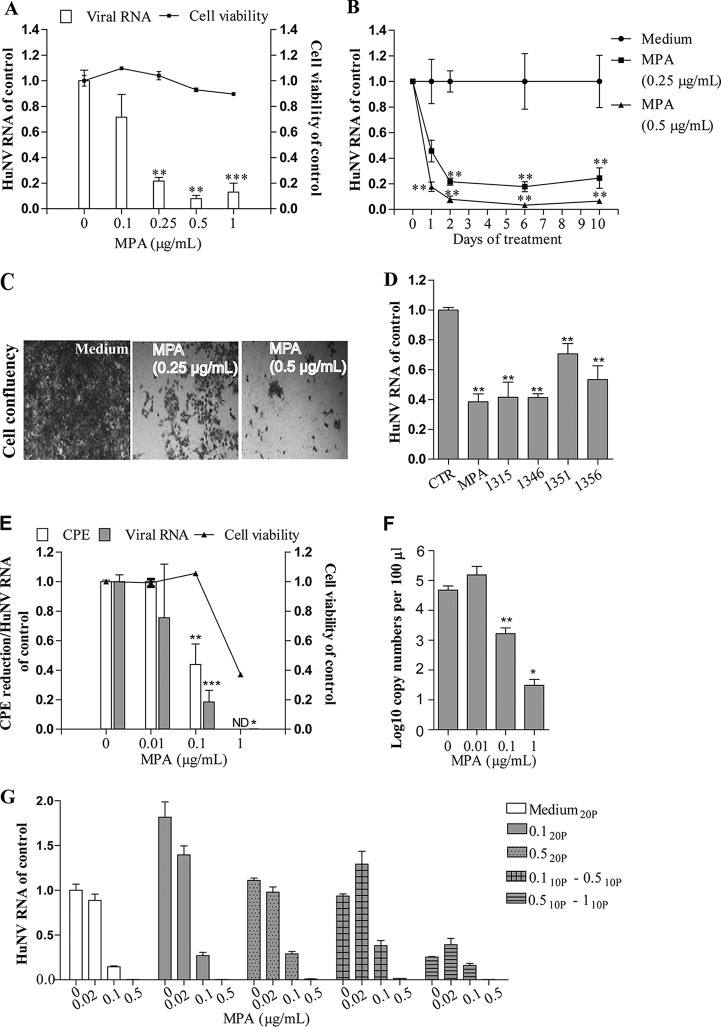FIG 4.
MPA potently inhibited norovirus replication and completely eliminated HuNV replicons from host cells without concomitant drug resistance. (A) Treatment with MPA for 48 h potently inhibited HuNV replication, as determined by qRT-PCR (n = 3 independent experiments with 2 replicates). (B) Clearance assay with MPA (n = 3 independent experiments with 2 replicates). (C) Rebound assay with MPA. Long-term treatment with 0.5 μg/ml MPA completely cleared HuNV replicons from host cells, and no colony formation was observed. (D) Comparison of the antinorovirus effects of MPA and 4 IMPDH inhibitors on HuNV. In the HG23 cells, treatment with 4 IMPDH inhibitors (the same concentration of 1 μM as MPA) resulted in a reduction of HuNV replication (n = 3 independent experiments with 2 replicates). (E) The antinorovirus effects of MPA were validated on MNV-1 as quantified by means of an MTT-based CPE reduction assay and qRT-PCR (n = 2 independent experiments with 2 to 3 replicates). ND, not detected. (F) Same as panel E for detecting the cellular MNV-1 RNA level; the viral RNA copy numbers in the supernatant (secreted viruses) were also detected after 24 h of treatment with MPA. MPA potently inhibited MNV-1 virus particle production (n = 2 independent experiments with 2 or 3 replicates). (G) The inhibitory efficacy of MPA against MNV-1 following 20 passages (20P) exposed to MPA or vehicle control. In the selection process, MNV-1 was either directly cultured in the presence of a fixed MPA concentration (0.1 or 0.5 μg/ml) or in a lengthy stepwise selection concentration from 0.1 to 0.5 μg/ml or from 0.5 to 1 μg/ml. After selection, the antinorovirus effects of MPA on the 20th passage of MNV-1 were determined by qRT-PCR. Data are presented as the means ± SEM (*, P < 0.05; **, P < 0.01; ***, P < 0.001). 10P, 10 passages.

